2025 TAMPA BAY’S





Last year tested companies’ natural disaster plans. Now workplaces are doing more to prepare their employees during hurricane season.
BY JUSTINE GRIFFIN Times Staff Writer
Employers across Tampa Bay have emerged from a challenging 2024 hurricane season to come out stronger together.
Despite the many headwinds — and, for several, the literal need to rebuild — employees who work at more than 100 different companies across Tampa Bay say the work and the culture of those workplaces have helped them make it through.
No matter the industry, every business in Tampa Bay was forced to face the impacts of hurricanes Helene and Milton.
We’re exploring how these companies rebounded, and in some cases, came back even stronger, in the 2025 Top Workplaces. Each year, the Tampa Bay Times surveys employers in the region to gain an understanding of what it’s like to work in a variety of industries, and from a number of companies, to come up with our annual ranking.
More than 100,000 of the area’s employees agreed to take part in rating their places of business. We surveyed 202 companies to come up with our top 100. Twenty companies made the list for the first time in 2025. Eight employers have made the list every year since we began.
For the past 16 years, the Times has conducted a Top Workplaces survey. The Times works with Energage, our research partner on the project.
These employees work at highly rated nonprofits, government agencies, small businesses and large corporations. They were eager to share their experiences with us.
Workers expressed gratitude and loyalty to their employers, who made them feel valued and appreciated.

“I feel respected in what I do. If I make a mistake I don’t worry that I will be belittled or disparaged. I have the flexibility to deal with personal life issues that sometimes happen during regular work hours,” writes one employee of Crown Automotive Group, which operates dealerships across Tampa Bay. “Crown has stepped up for the employees repeatedly. Through covid-19, hurricanes and floods. Crown has demonstrated an exemplary commitment to its employees.”
Teamwork was a top trend among our survey results.
“They truly cares for their team and it shows in many ways through personal struggles and especially during and after our recent hurricanes,” wrote a worker with Priority One Leadership, which has an office in Tampa. “The 16 hours of compensation time offered (during the hurricanes) by our amazing president was such a nice and welcome surprise that really helps. Everyone willing to help each other
personally or professionally. Feels more like a family.”
And taking “work-life balance” for all has emerged as a new trend this year.
“I feel appreciated, well compensated, engaged in my work, challenged but not stressed, and genuinely appreciated by my co-workers,” wrote an employee from Fisher Investments. “This is probably the first job I have had where I honestly feel like my worker-employer relationship is equal and fair.”
At Guidepoint Security, which has an office in Tampa, one worker said she loves being able to “work and be a mom.”
“The flexibility helps me excel in both areas of my life. The management team is informative, transparent and supportive. I am not micro-managed which allows me to get my work completed without feeling stressed out.”
Now, let us tell you about some of the Top 100 Tampa Bay Workplaces of 2025:



Last year tested hurricane plans. Workplaces learned how to act quickly.
BY SHAUNA MUCKLE Times Staff Writer
In past storms, HomeServices Florida Property Group launched fundraisers and food drives in the name of distant victims living hours south.
But last year, for the first time, the worst devastation hit agents and staff at the real estate company.
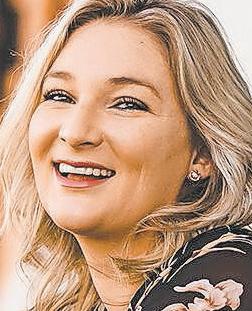
“You don’t know until it’s in your backyard ... what all it really takes,” said Olivia Crumbley-Hamilton, the company’s events and brand coordinator.
Some 14 agents lost everything to flooding from Hurricane Helene. They needed help within days — if not hours. So, leadership scrambled over the weekend, putting together a Google form asking who in the company needed help and who could volunteer their time and money.
Volunteers ripped drywall and flooring out of their co-workers’ homes and salvaged valuables.
Others amassed a donation pool of around $30,000 — enough for every devastated co-worker to get $2,000 for essentials like rental cars and emergency housing.
Tampa Bay’s workplaces reeled in the wake of oncein-a-century storms. Emergency plans that had long remained theoretical were finally put to the test — twice. Generators blew and trees collapsed atop power
lines, complicating efforts to reach employees.
Traumatized storm victims had to report back to the workplace that financially and professionally supports them. During times of personal stress and loss, an employer’s support is invaluable, said Deserie Valloreo, founder of Insight Wellness Works, which offers personal wellness classes and workshops to local companies.
Tampa Bay’s top workplaces say they’re proud of what they could do for their staff in those urgent hours, days and weeks after hurricanes Helene and Milton. Here are a few examples of how workplaces stepped up amid devastation no one could plan for:
• Habitat for Humanity
Tampa Bay Gulfside, a nonprofit that builds affordable housing in Pinellas, Pasco and Hernando counties, sent the same employees who usually install Sheetrock to devastated co-workers, where they gutted homes before mold set in. Twenty-five generators were also available to staffers in need.
• Employees received texts in English and Spanish throughout the storms at Power Design, an electrical contractor. Those check-ins continued until employees responded, confirming their safety. A couple of days later, the contractor sent another mass text asking about the workers’ housing. Those who said they needed help had a Power Design volunteer arrive on their doorstep, ready to inspect elec-
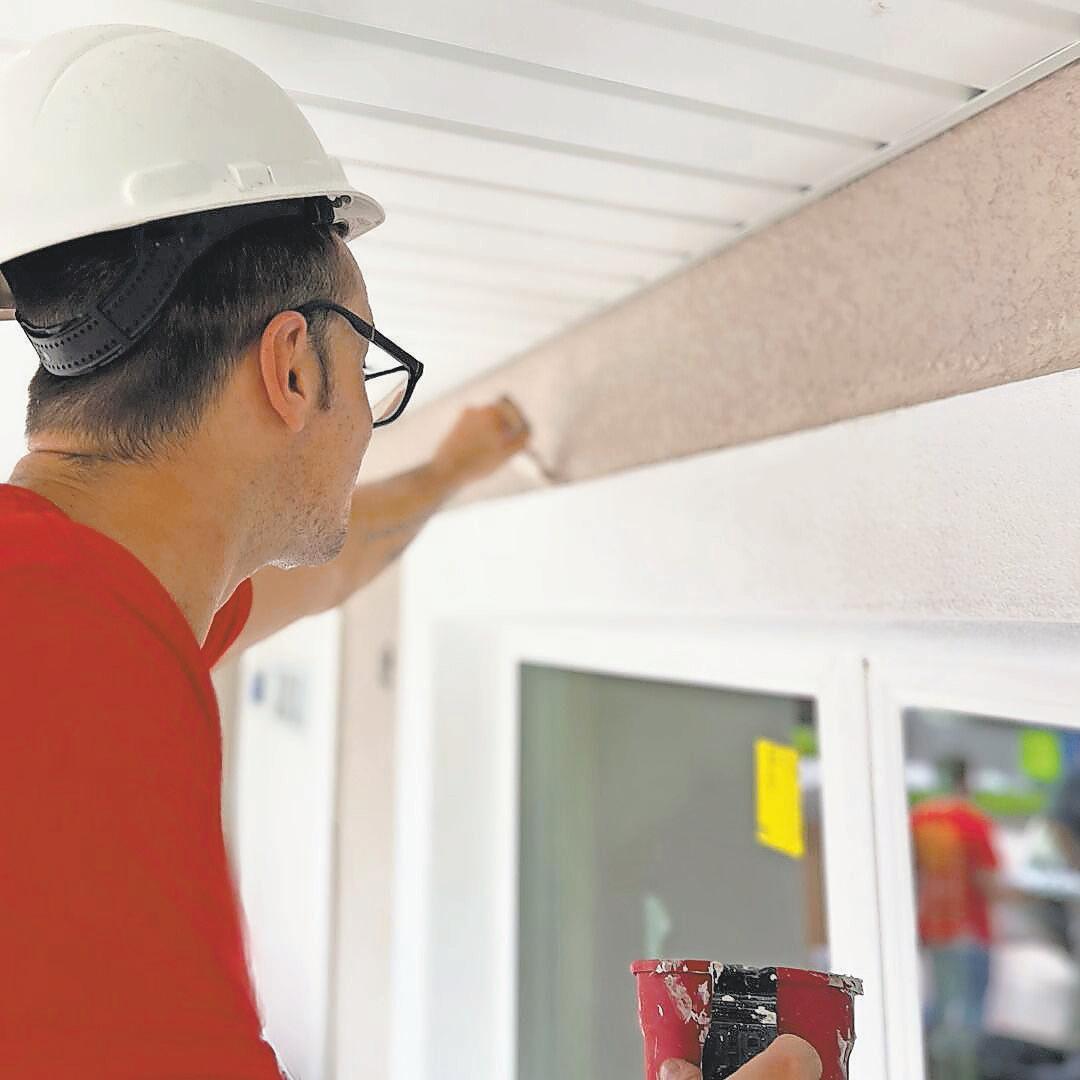
trical systems, remove fallen trees or install backup generators.
• At Tampa Bay Water, the region’s drinking water utility company, maintenance technicians rode out the storm at headquarters before dispersing into the field to check for damage. Those responders got extra time off as thanks, said Michelle Stom, chief strategy officer. Managers offered extra flexibility with time off and workfrom-home days for those who needed to repair their homes.

Beyond urgent repairs, communication and flexibility, workplaces also emphasized the importance of looking out for employees’ financial and mental stability. Power Design handed out gift cards or cash for groceries, home repair supplies, temporary housing and rental cars to 150 employees, said Alex Fox, senior director of brand strategy.
“When things are really stressful and scary, (we were) just trying to provide some level of support, stability amongst all of that,” he said.



In its storm-related communications, Tampa Bay Water sent out a number for the mental health hotline employees can freely access, Stom said. While employers’ first instinct may be to focus on employees’ physical needs — like housing, transportation and groceries — helping them manage stress and anxiety as they contend with catastrophe is just as important, Valloreo said. That might mean simply reminding workers of the mental health programs they have access to.
“I’ve met many employees who don’t even realize if they flip over their insurance card there’s a phone number for employment assistance and mental health counseling,” she said. But not all employers in Florida are required to offer mental health coverage, and the quality of behavioral health benefits can vary widely, Valloreo said. Employers can offer stress management sessions or contract with mental health counselors if their employees need more resources, she said.

Devastating storms like Helene and Milton could become a new normal, the Tampa Bay Times has reported. So what have local employers learned for next time?
Stom of Tampa Bay Water asked her workers that question after Helene hit. For them, there’s no such thing as too much text and email communication, particularly as they hunker down. Power Design is launching a preparedness program so employees have the right generators and battery packs on hand before they lose power.
Employees’ peace of mind and personal safety affect the work they perform, said Mike Sutton, CEO of Habitat for Humanity Tampa Bay Gulfside.
“Our staff is so important to carrying out our everyday mission,” he said. “We need to help them do just that.” Contact Shauna Muckle at smuckle@tampabay.com.
Energage crunches the data based on a 25-question survey that takes just a few minutes to complete.
BY BOB HELBIG Energage
If you want to really know what’s happening at work, ask the people on the front lines.
That’s the foundation of the Top Workplaces award.
For the 16th year, employee survey company Energage has partnered with the Tampa Bay Times to honor the best places to work in the Tampa Bay region.
This award can’t be bought; it has to be earned, based on employee feedback. Winners are chosen through a scientific survey
process. Positive employee feedback equals recognition. Workplaces that don’t have strong feedback are excluded from the winners list.
Energage crunches the data based on a 25-question survey that takes just a few minutes to complete.
The survey asks employees for their feedback on such factors as pay and benefits, direction, leadership, meaningfulness, and appreciation. Energage scores companies based on the responses. Organizations do not pay
any fees to survey employees or to earn a Top Workplaces designation. If they choose, organizations can purchase the survey data. There is no obligation for winners to purchase any product or service.
For the 2025 winners list, 2,544 organizations were asked to survey their employees, and 202 agreed to do so. Based on the survey feedback, the top 100 have earned recognition as Tampa Bay Top Workplaces.
“Top Workplaces awards are a celebration of good news,” said Eric Rubino,






CEO of Energage. “They exemplify the significance of a people-first workplace experience, reminding us that employees are the heart of any thriving organization.”
The winners list is intended to reflect on the regional workforce. To qualify for Top Workplaces recognition, employers must have at least 50 workers in the region. Survey results are valid only if 35% or more of employees respond; employers with fewer than 85 employees have a higher response threshold, requir-
ing responses from at least 30 employees. Employers earn Top Workplaces recognition if their aggregated employees’ feedback score exceeds national benchmarks.
Employers are grouped into similar sizes to best compare similar employee experiences. Energage has established those benchmarks based on feedback from about 30 million employees over 19 years. They are ranked within those groups based on the strength of the survey feedback. Why might a particu -
lar employer not be on the list? Perhaps it chose not to participate, or perhaps it did and employee feedback scores were not strong enough. Energage also runs tests on survey feedback and, in some cases, may disqualify an organization if, for example, a high number of employees said they felt pressured to answer positively.
To participate in the 2026 Top Workplaces awards, or for more information, go to the nomination page at tampabay.com/nominate.




















































































BY EMILY L. MAHONEY
Times Staff Writer
CLEARWATER — Wes
Eubanks has worked with famous performers for so long that he knows how to approach them: to let them set the tone and never assume they want a handshake. Some are germ-conscious, others are fried after long weeks on tour.
So when beloved late actor and comedian Robin Williams got out of the car for a 2013 event at Ruth Eckerd Hall, Eubanks, the hall’s production manager, watched as Williams put his hands in his jacket pockets and figured that was that. Then Williams gave him a playful elbow tap.
After the show, Eubanks said Williams wound up wandering near his office just offstage, and the two strolled down the hall
together talking about musicians.
“Usually I don’t get giddy,” Eubanks said. Williams was the one exception.
Eubanks is just one member of a team of people who work to make Ruth Eckerd Hall a venue where performers, the backstage crew and fans alike can all get comfortable. When the talent and their people are happy, that energy transcends to the audience, he said. And all that care is what employees said makes Ruth Eckerd a great place to work.
“You think about it, we’re therapists. People are coming to escape, to be in a safe place where they can kick back and forget about the world and just have some fun,” Eubanks said, sitting in his office. The walls are plastered in band posters, including one Led Zeppelin painting bearing an auto -
graph from Jason Bonham,
son of the band’s late drummer, who spotted the artwork backstage after a show.
The attentiveness Ruth Eckerd Hall shows artists is often in the details: an extra bottle of wine for the new up-and-coming band, in-house catering to keep everyone well-fed. Ahead of a recent Wednesday night show by rock band Little Feat, staff prepared a menu that included grilled eggplant caprese, sliced ribeye and lemon berry mascarpone cake. A backstage ICEE machine is often a favorite. When Broadway shows hit the stage, the hall has laundry and sewing machines in the back to accommodate all the costumes. Employees make sure actors have what they need for quick costume changes, including knowing “you don’t gawk” when



actors have to flash some nudity, Eubanks said. It’s fun when people in elaborate, period-specific costumes are zipping through the halls.
To Sandy Villasuso, director of patron services, the best part of any given performance isn’t what’s on stage. She loves watching the audience, whether it’s kids attending a show on a field trip or a fans of a pagan band that recently bellowed Norse chants.
“I’m constantly in there watching everybody’s reaction, how they’re clapping,” she said. “I mostly go in (the auditorium) to see that.”
Ruth Eckerd’s president and CEO, Susan Crockett, feels the same way.

She often prefers to watch shows from a higher seat so she can see the audience better, and loves how each event brings an entirely different crowd.
“We have a different market walking through our door every day,” she said, from students to headbangers to jam band superfans. The people-watching, Crockett said, is superb.
Multiple employees praised the work culture at Ruth Eckerd, saying it’s a place that grants flexibility for their personal lives. Eubanks, a single dad, has had his son sleep on a bed in a colleague’s office when shows ran late.
“As a nonprofit, I always tell people, ‘You can make more money somewhere else,’“ Crockett said. ”But what’s the tradeoff for that?
Having a support system around you and the ability to have that flexibility and get that satisfaction of what we do.”
Plus, Crockett, too, has her favorite backstage stories.
When she was in middle school, she had so many posters for singer-songwriter Peter Frampton tacked to her bedroom walls that classmates called her “Frampton Freak.”
In the 36 years she’s worked at Ruth Eckerd Hall, though, Crockett always seemed to miss him when he was there. Until two years ago, when he played the opening weekend for
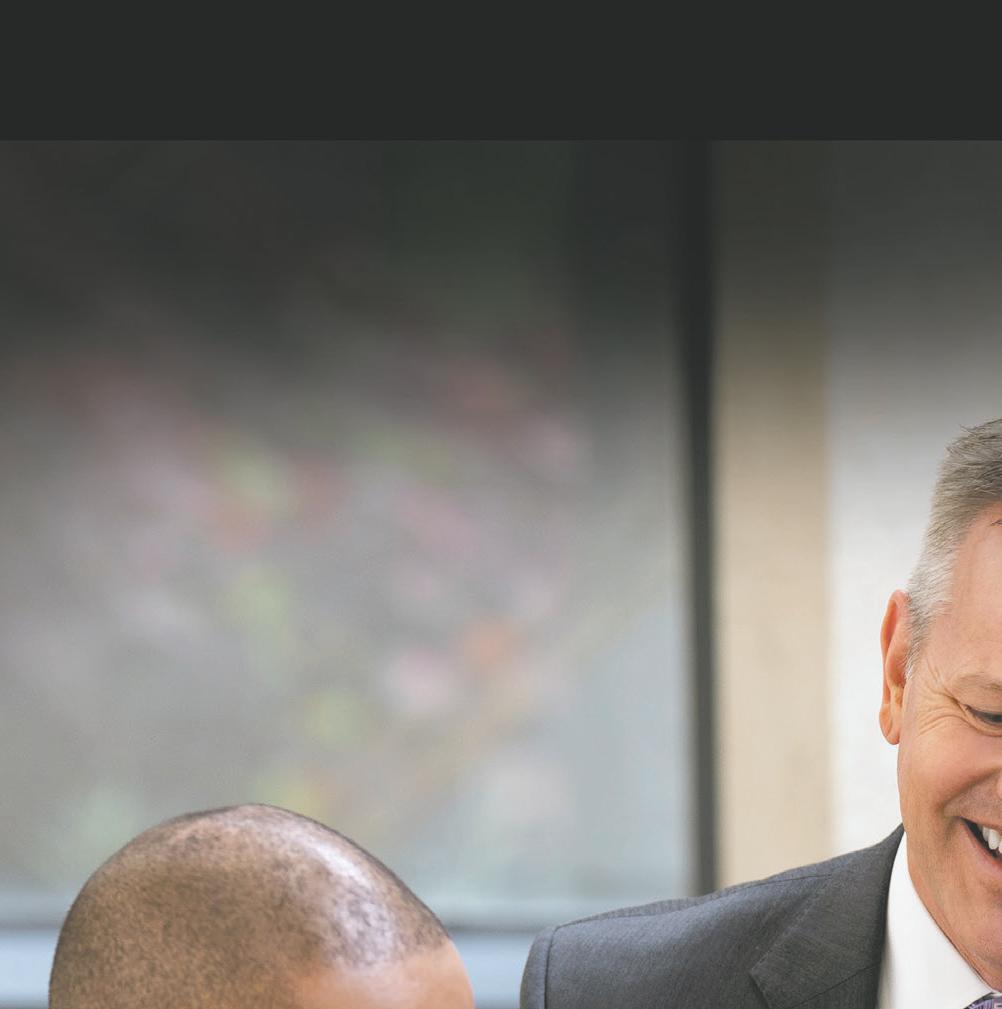



The Baycare Sound, the outdoor venue also managed by Ruck Eckerd staff.
“I said, ‘This is it. I’m meeting him,‘” Crockett said. At the show, he sounded just as good as she had imagined in 1980. As she chatted with him backstage, Frampton asked if she’d like to take a photo.
“I said, ‘I have been waiting 48 years for this.’”
• • •
RUTH ECKERD
HALL
Location: Clearwater
Employees: 426 Website: rutheckerdhall.com
Employee comments:
“Fun atmosphere, good co-workers and managers. Fun, fast pace.”
“The people I work with are great people and we are working towards a common goal. Bringing shows to the community and arts education to our youth and others is an amazing thing to be a part of.”
“I love my job because of the amazing people and work with and the culture of the entire staff. Everyone works hard but has a great time as well. I’m very blessed to be a part of the Ruth Eckerd Hall family!!!”
Contact Emily L. Mahoney at emahoney@tampabay.com. Follow @mahoneysthename.
















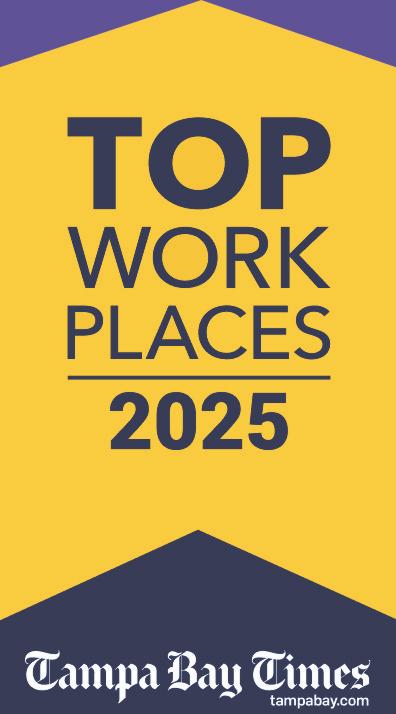


Family-owned business finds success bringing care to their patients’ doors.
BY CHRISTOPHER O’DONNELL Times Staff Writer
TAMPA — Spending on home health care in the United States is forecast to grow to $282 billion by 2032, more than double the current value of the marketplace, according to estimates from the Centers for Medicare & Medicaid Services.
Driving that trend is the looming retirement of the baby boomer generation that wants to age and receive health care in their home.
One in five Americans will be 65 or older by 2030, according to U.S. Census Bureau projections. Meanwhile, 88% of Americans would prefer to receive care at home, a study from The Associated Press-NORC Center for Public Affairs Research found.
Tampa-based Care Team Home Health is well positioned to capitalize on that growth. The company was founded 37 years ago after Georgienne Stoker and her two eldest sons sat around the kitchen table kicking around ideas for a family business.
Almost four decades later, Care Team remains a family-owned and run business, albeit one that has grown to 62 employees and whose staffers have roughly 45,000 patient interactions per year across 11 counties.
With no overhead like expensive clinics and hospitals, home health care is far cheaper than out-patient care, said Care Team President and CEO Mark Stoker.
“We can provide health-
care services in the comfort of the patient’s home at a sizably more economical price than the cost to deliver that service at the doctor’s office or a hospital,” said President and CEO Mark Stoker. “As taxpayers, we should support our governments’ interest in directing these services toward our industry.”
The preference for health in the home makes sense, he said. Studies have shown that patients often recover more quickly in their home environment and feel more in control of their treatment.
“They’re happier,” Stoker said. “It creates a positive environment.”
Care Team staffers provide personal home health services like bathing, grooming, help with meals and companionship. It’s more medically qualified employees help patients with wound care or to manage their medication.
The family feel of the company extends to its relationship with patients. There is an effort to try and match caregivers with those they help so relationships are forged. The patients it serves includes the disabled, geriatric and veterans.
The company’s workplace culture reflects its philosophy that the best help comes directly from other people. There is no automated telephone answering service. Instead, the company’s telephones are manned by people 24/7 all year long. It means patients can call even in the middle of the night if anything is distress-


ing them. Employees also benefit, Stoker said.
“Any employee who has a blow out on the way to work — even if at 5 o’clock it morning — they can call,” he said. “This way you know someone is there.”

The home health industry serves as occasional employment for workers in occupations that provide extended time off such as teachers who want to pad their earnings during the summer break. It’s also provides a highly
flexible work schedule and attracts many who want to work part time. Team Care provides life insurance and free group dental and vision insurance to anyone who works more than 30 hours a week.

That flexibility makes it easy to help employees who need maternity leave or time off for other reasons, Stoker said.
“It’s a family ruin business so we try to treat our employees like family,” he said.
The company conducts regular employee satisfaction surveys to ensure that its workers are happy. It also contracts with Activated Insights, to better measure how well the company is performing for both patients and employees.
It’s a source of pride that for the past five years, the company has averaged above 90% for its patient satisfaction scores, Stoker said.
“That’s a patient saying ‘I’m satisfied with the quality of care. I appreciate everything you’re doing for us,’” he said. •
Employee comments:
“I am able to make a difference in patients and employee’s lives.”
“Management is fair, generous and flexible to all employees needs during and after work hours as needed. Look forward to our traditional annual Christmas office party.”
“Management makes it easy and I feel valued.”
Contact Christopher O’Donnell at codonnell@tampabay.com or 813-226-3446. Follow @codonnell_Times.










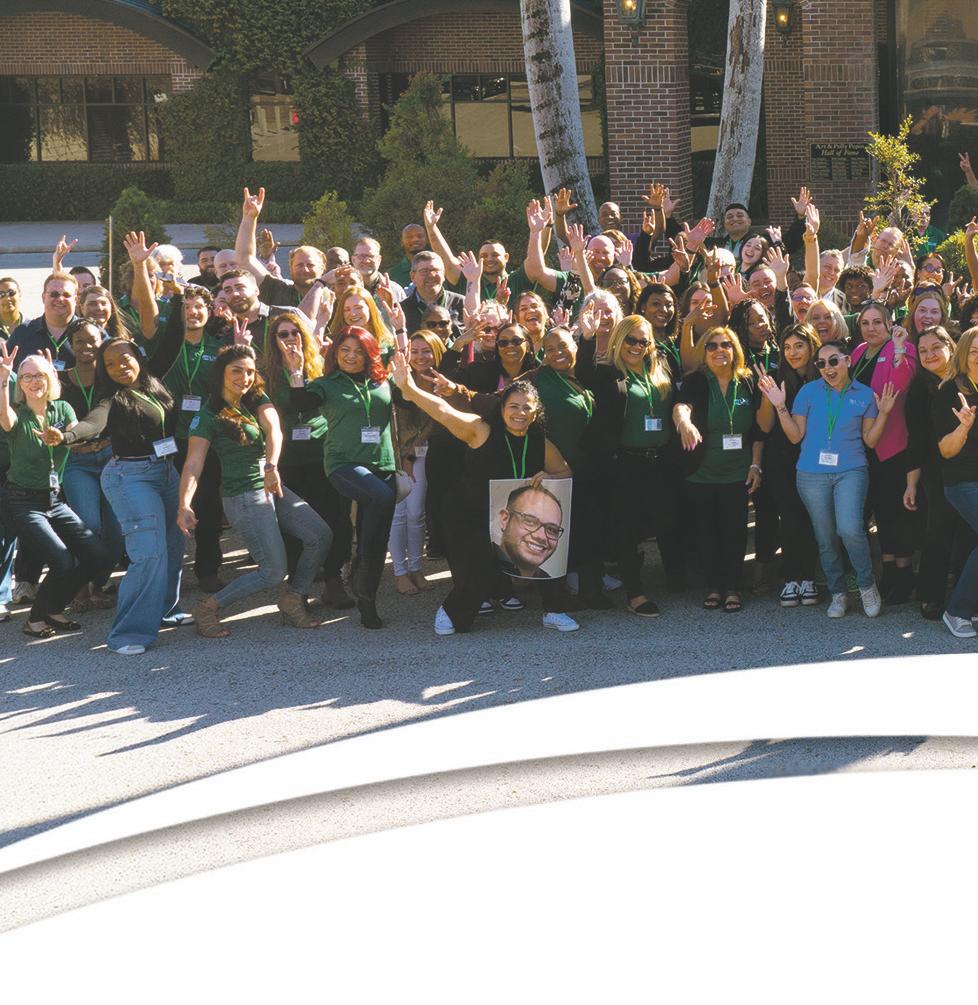


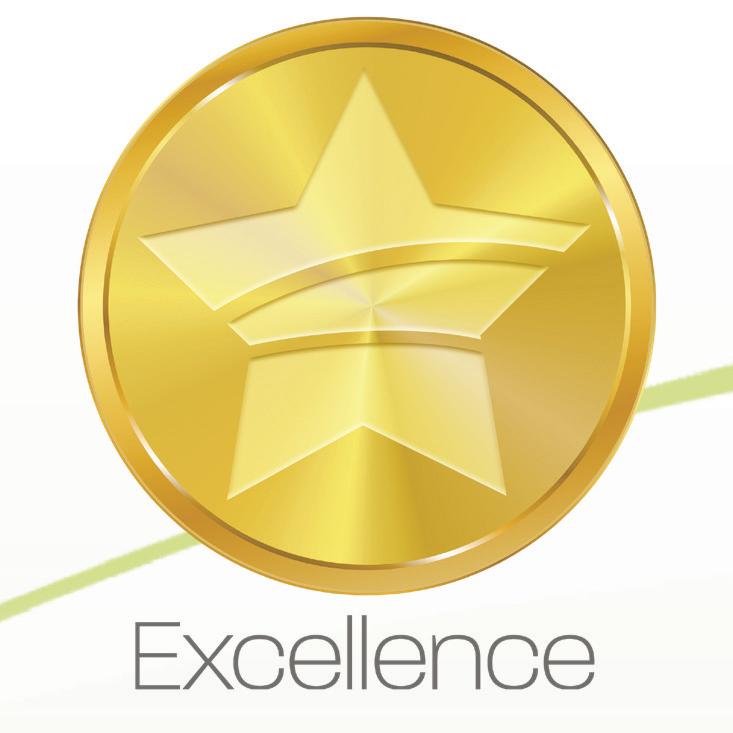






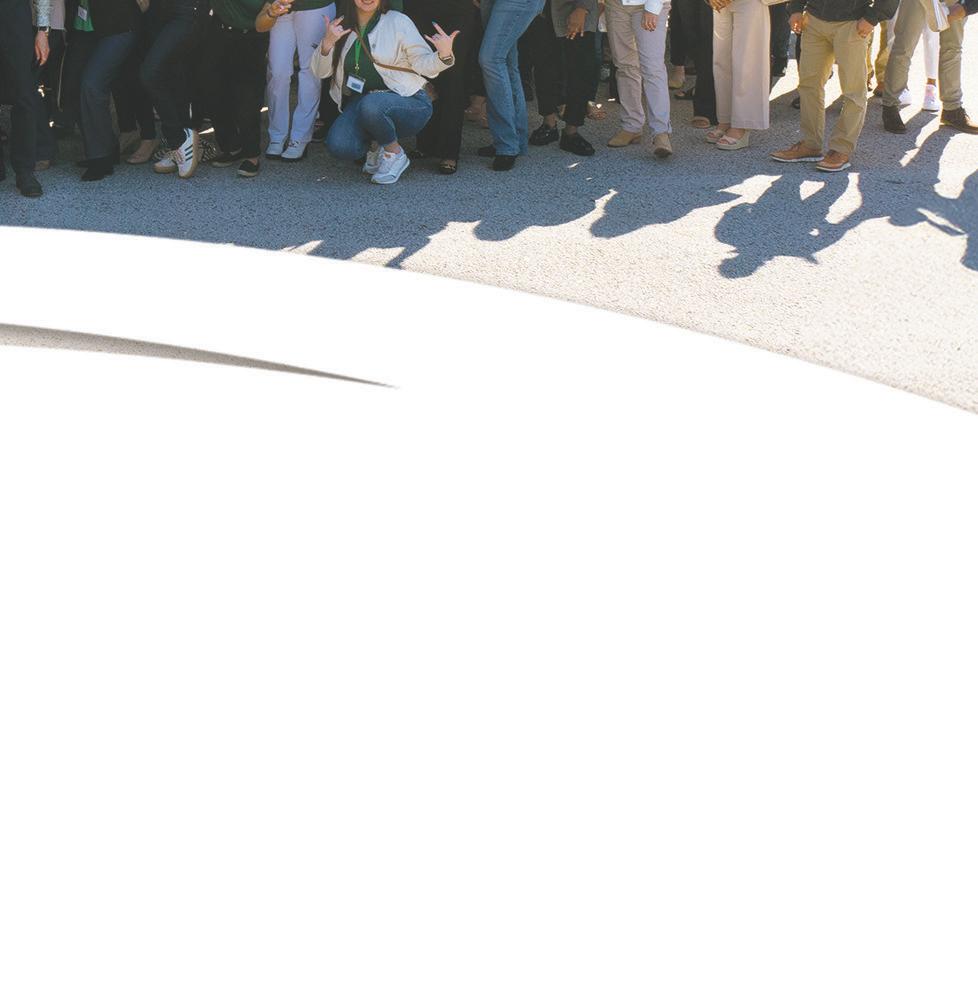









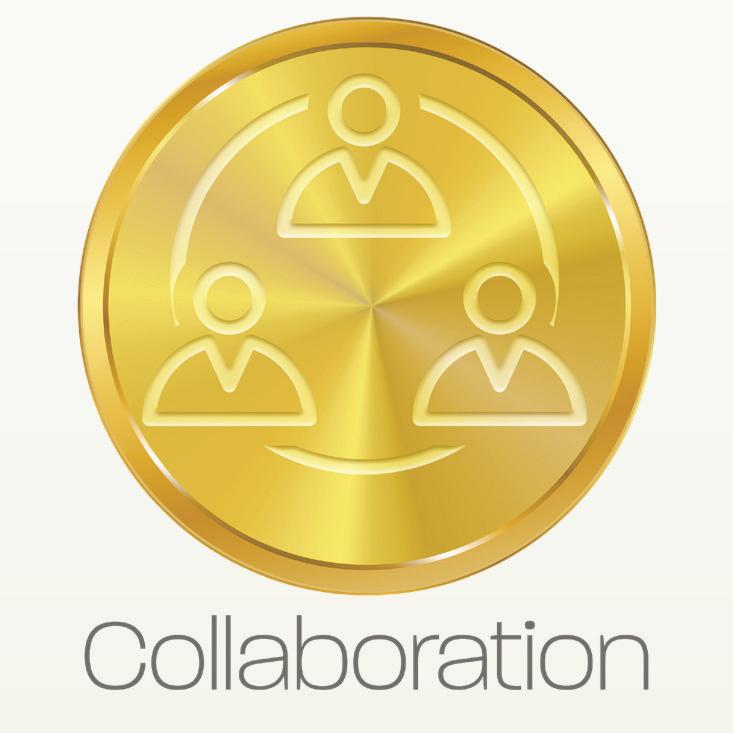






Orthopaedic Medical Group of Tampa Bay grew from single Brandon clinic.
BY CHRISTOPHER O’DONNELL
Times Staff Writer
LITHIA — Dr. Stuart Goldsmith founded Orthopaedic Medical Group of Tampa Bay in Brandon in 1978, hoping to build a practice of dedicated physicians that would bring high-quality care to underserved areas in East Hillsborough. But the orthopedic surgeon found it tough to find doctors willing to stay on the same journey. It wasn’t until his son, Dr.
Scott Goldsmith, joined the practice in 2008 that the business began to thrive, adding a second clinic in Brandon and one in Plant City. It hasn’t stopped expanding.
Today, the company employs 230 workers in nine clinics and a 30,000 square-foot office and surgery center in Lithia. It has specialists in hand, spine, shoulder and elbow, hip and knee reconstruction, sports injuries, and foot and ankle
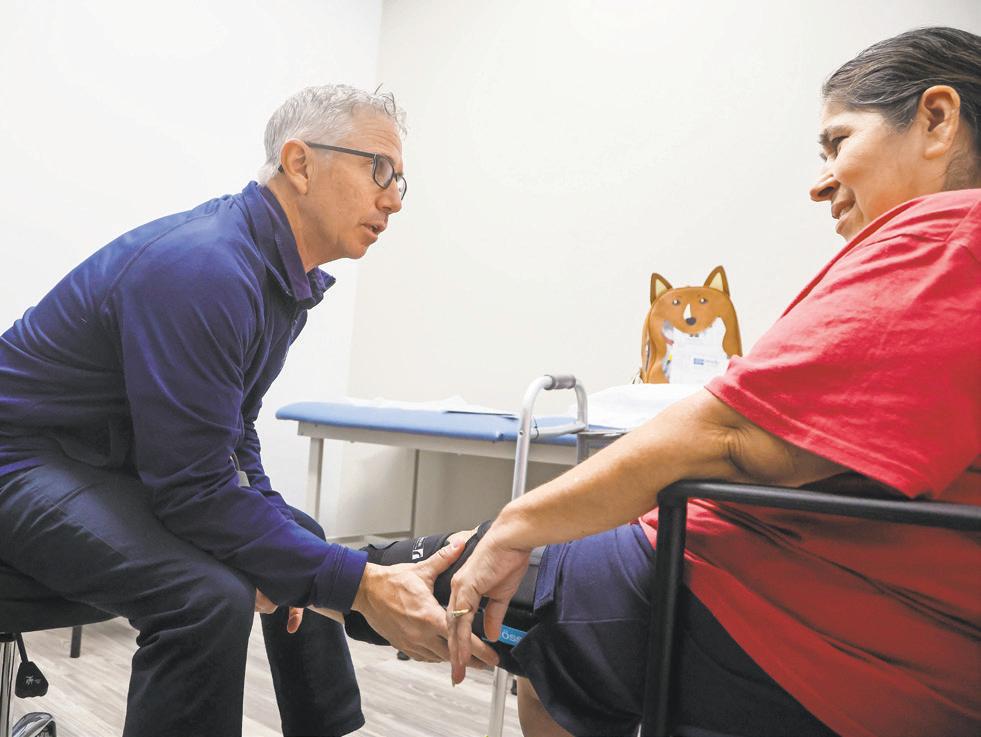
and podiatry. The firm now covers a large area from Sun City Center in the south to Wesley Chapel in the north and as far east as Winter Haven. But there is still a concentration of clinics in East and South Hillsborough.
“We are now that group that Dad envisioned,” Scott Goldsmith said.
Key to the company’s growth has been a focus on recruiting top-class surgeons and providing care as quickly as needed. Fracture patients are typically seen within 24 hours and those waiting for other procedures can get appointments within one week provided they are flexible about which location they are seen.
The company is able to do that as it has 13 surgeons and a similar number of physician assistants on staff, Scott Goldsmith said.
“Our offices are able to accommodate high volumes of patients,” he said. “We don’t have patients waiting for two hours.”
Hip and knee operations are among the most common procedures performed by Orthopaedic Medical’s surgeons along with shoulder injuries.
The company also strives to be inclusive. It accepts all types of medical insurance, including Medicaid, which some health care providers refuse because of low reimbursement rates. Staffers are encouraged to treat everyone equally and with dignity, Scott Goldsmith said.
When it comes to organization, Orthopaedic Medical has found inspiration in the U.S. military, recruiting former service members for positions like chief operating officer and chief financial officer. Their experience while serving the nation makes them exceptional executives, Scott Goldsmith said.
“People with military
background add a level of organization and expertise that is unique. They have a unique appreciation of work ethic,” Scott Goldsmith said.
Despite its growth, the company strives to maintain a family feel. It has also made it a philosophy to keep most functions in-house including its human resources department. The one service that is outsourced is the call center. It places a premium on training so staffers never feel like they are thrown into a job for which they’re not prepared.
The company’s growth seems set to continue with plans for taking over a second building in Plant City and a new clinic planned for Waterset, a master-planned community in the Apollo Beach area.
And their founder, Stuart Goldsmith, now 79, still sees patients once a week, his son said.
“That family feel, which was legitimate back in 2008, we’ve been able to continue that,” he said.
Location: Lithia
Employees: 230
Website: omgtb.com/
Employee comments:
“Although we have grown into more of a corporation, we still have that family feel.”
“I feel appreciated as an individual. My ideas are heard. I am recognized as a person, and not just a number. I feel valued.”
“It allows a unique challenge to work with so many wonderful people who share a common culture of wanting to help patients who are in pain feel better.”
Contact Christopher O’Donnell at codonnell@tampabay.com or 813-226-3446. Follow @codonnell_Times.
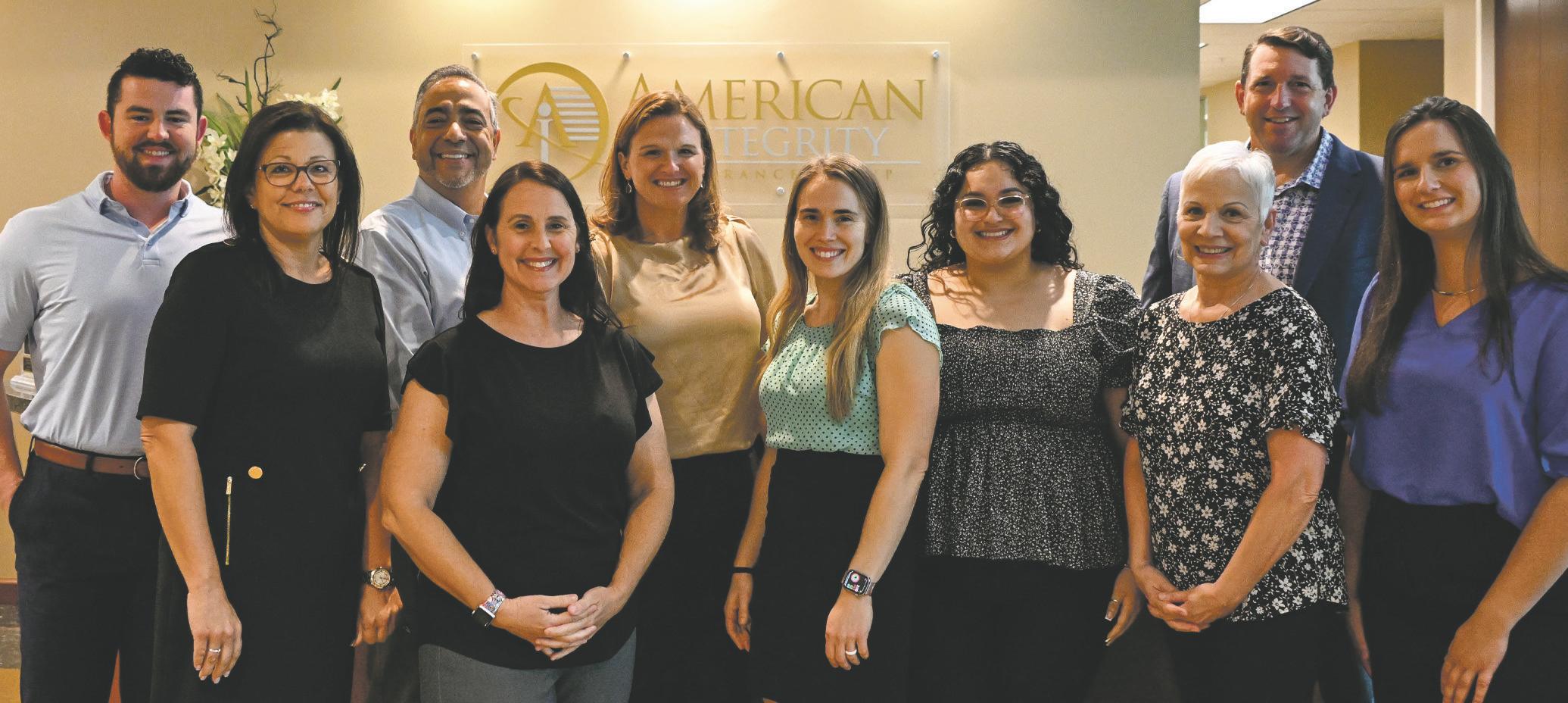




















































































BY TEGHAN SIMONTON Times Staff Writer
Five years after Gulf Coast JFCS finalized the adoption of a newborn child, Angelica Martin still receives correspondence from the family. They send her photos marking the adoption anniversary, holidays and other milestones — like his first pair of glasses.
“Those moments are humbling for me,” said Martin, a case management supervisor at the nonprofit.
“It drives me. It makes me feel good about my work.”
Hillsborough County consistently holds one of the highest child removal rates in the state, and Martin’s office provides families with resources to rectify the situation — be it referrals to addiction treatment, rental assistance or mental health services. The ultimate goal is getting the child back with their family or into a “forever home.” She oversees a team of case managers, serving around 80 children in 36 families.
“I want to be that person that advocates for people who are voiceless, who are vulnerable, who are not being seen or heard. Because I know I was that kid,” said Martin, now a case manager of nine years.
“I just want to make a difference.”
Her office runs one of dozens of programs through Gulf Coast JFCS, a nonprofit with more than 50 initiatives serving 19 Florida counties through some of the region’s biggest social challenges.
With services spanning affordable housing, elder and disability services and much more, there is little the organization doesn’t do. It offers behavioral health treatment and provides housing to low-income seniors. Its workforce development office delivers
coaching, training and job skills development. And the Refugee Services program helps vetted refugees from all over the world with settlement in Tampa Bay — starting immediately when they arrive at the airport.
Empathy and caring are at the center of everything, said Jhana Perez, an administrative coordinator for the refugee program.
Perez helps connect new arrivals with housing, employment opportunities, schools, English classes and other needs. She stays in touch with them for months at a time to ease their transition, connecting them with different community programs to help them navigate their new surroundings.
“My clients and their hope in me, in the agency — that’s my motivation,” Perez said. “Our clients go through a very hard process and they believe in us, that we will help and support them.”
Aid to Gulf Coast’s current refugee clients has continued even after a January order from the federal government to cease services to newly arrived refugees. Within the week, Gulf Coast quickly placed about 42 people who had already arrived in Tampa Bay. Any additional services the organization performs are done without the reimbursement it normally receives.
“It’s heartbreaking,” Perez said. “We are focusing our energies and all resources to help the clients that are here.”
Five years ago, she was making her way through the same system as a refugee from Columbia. She told herself that if one day she was able to get settled in any country, she would do what she could to help others in the same situation.
“It’s an experience that

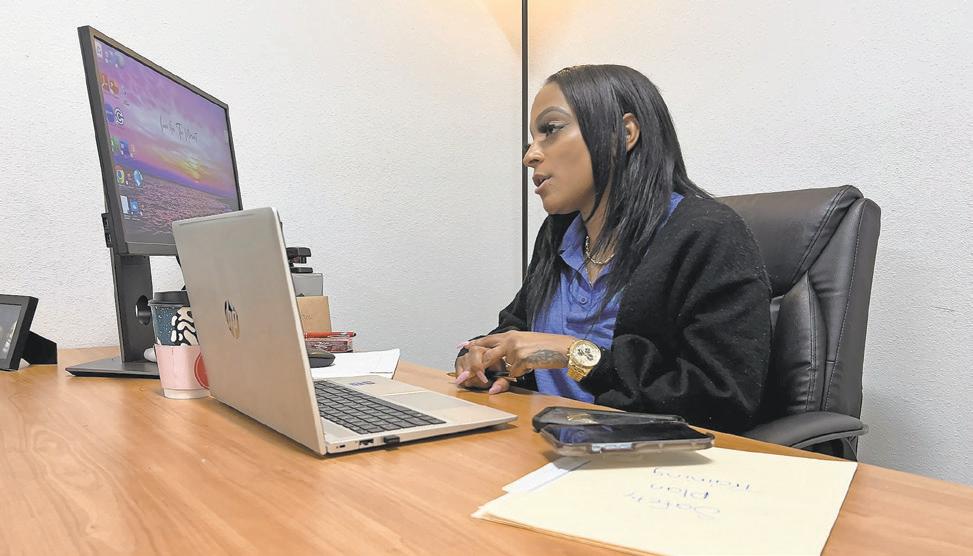
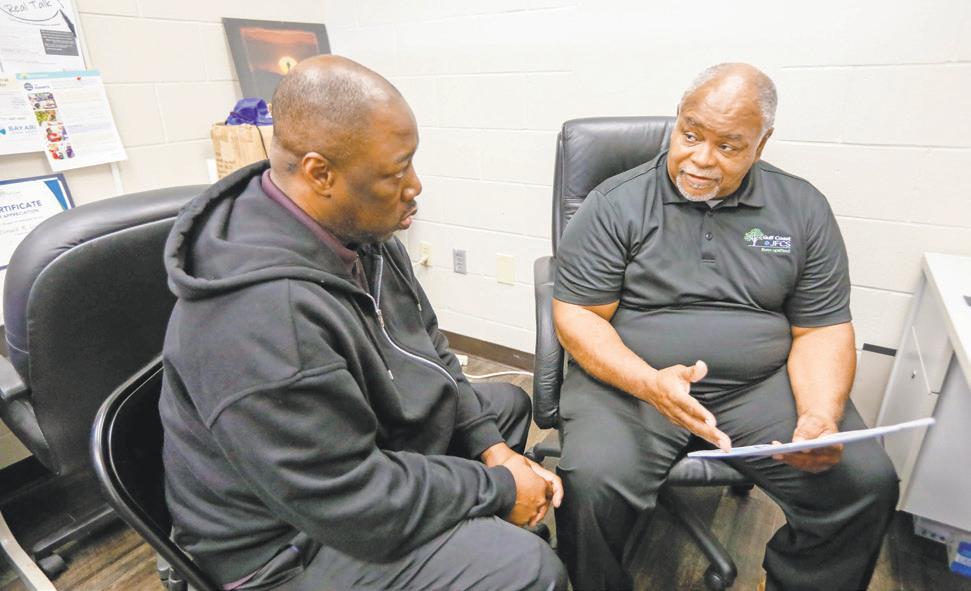
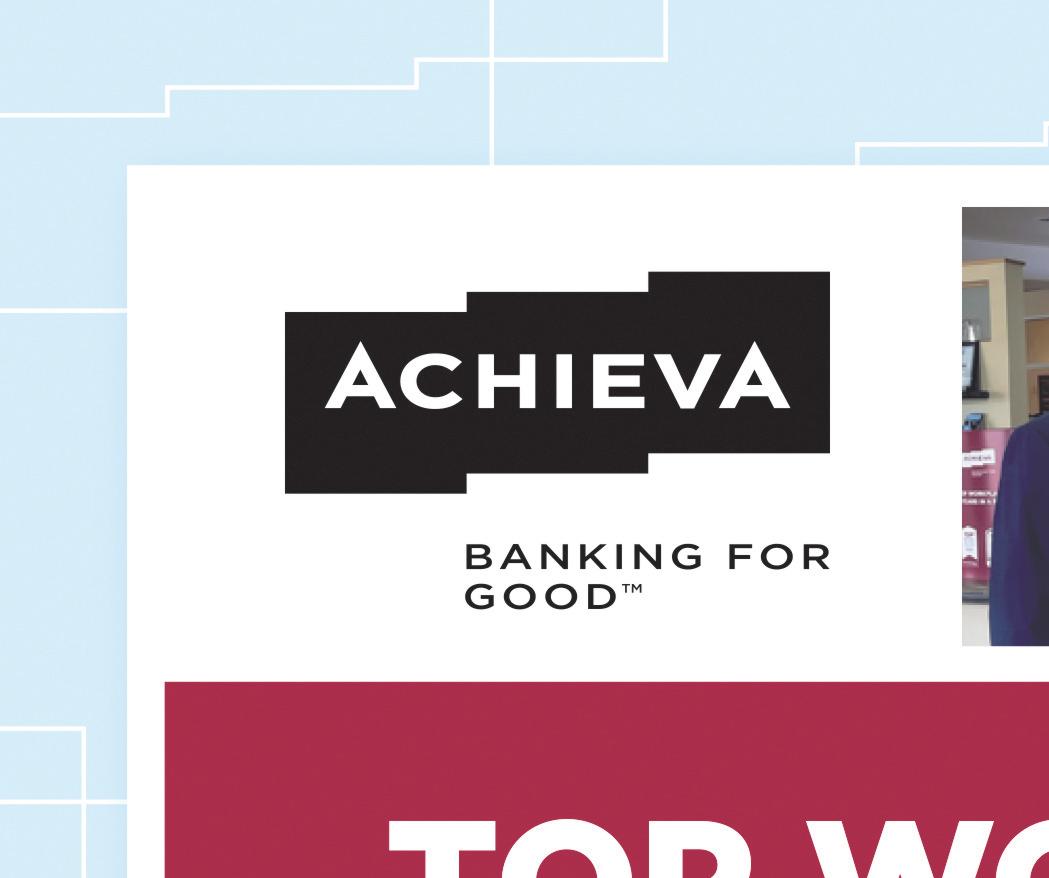
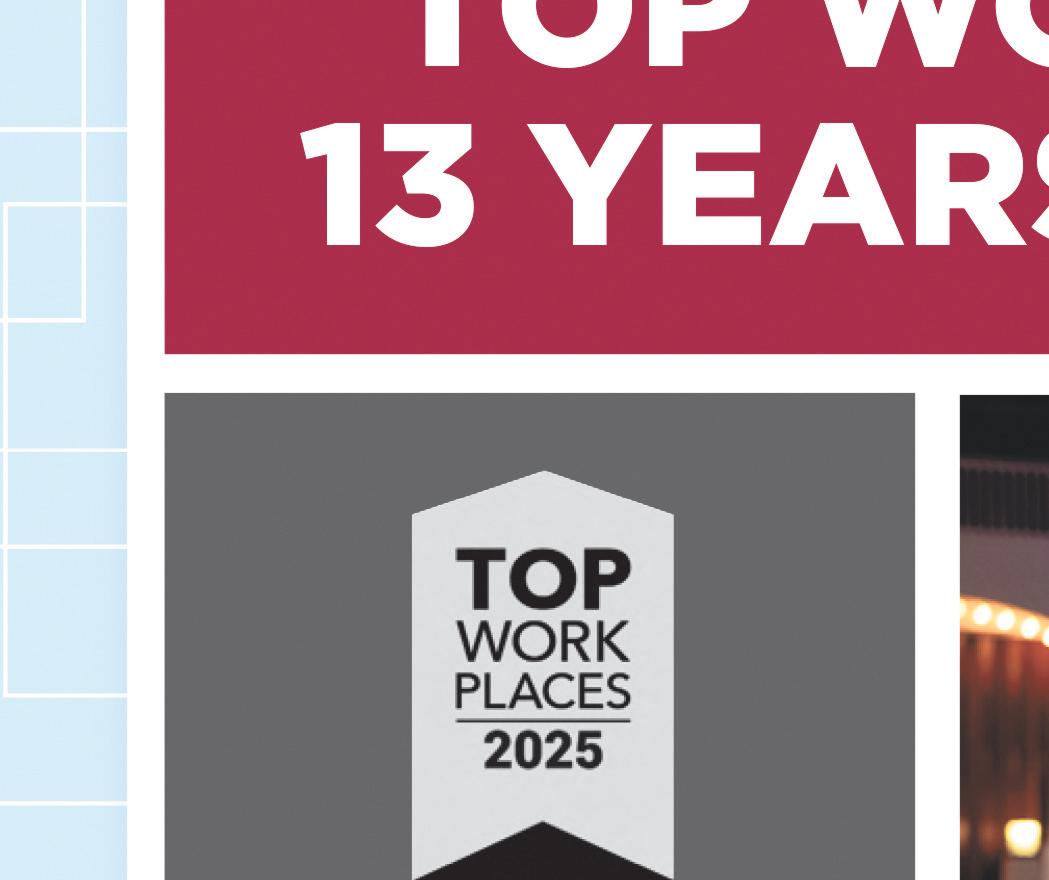

none of us choose to be in,” Perez said. “Because of things that happen in our country, sometimes we are forced to be in that position.”
Employees say the overarching mission is to meet the community’s needs — whatever they may be.
“What I like about Gulf Coast, starting from the CEO all the way down to my director, is the transparency,” said Donald Gulley Jr., who works in the organization’s employment assistance office in St. Petersburg. “We all feel and care for the clients and we’re all here to do good work.”


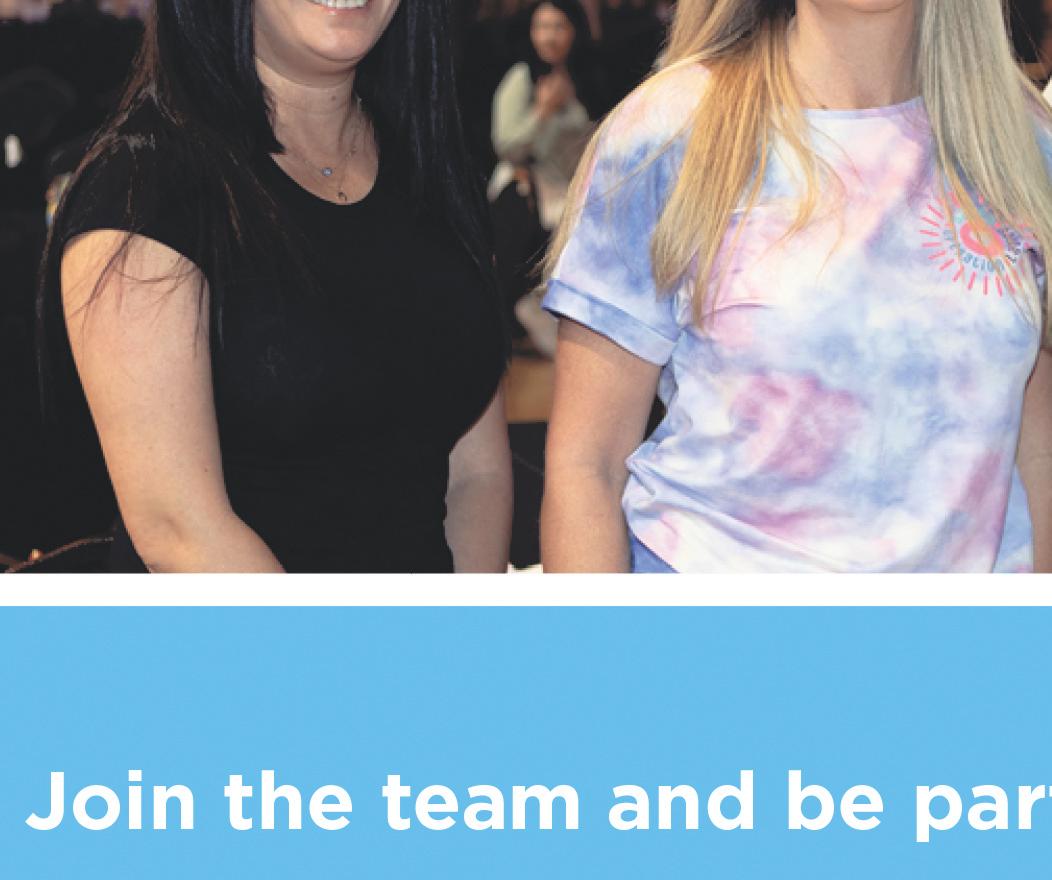

“I like helping people,” Gulley said. “I really liked the fact that I could go into a courtroom, meet with a client, and within six months of meeting with that client, they go from not having a job, not paying child support to having a job, paying child support and spending more time with his children.”
Across programs, Gulf Coast employees say the support they receive while bettering the community is paramount.
“We were pouring back so much more because there was so much that needed to be done,” said Martin, in the child welfare office, after an especially busy year for case managers.
But she always had the support and dedication of her team, she said. Gulf Coast employs a counselor on-site to help case managers with the emotional tolls of the job. Leadership is always flexible and understanding, she said.
“They’re there for the community, they’re there for their staff,” she said.
• • •
GULF COAST JFCS
Employees: 568
Website: bit.ly/41ZZE1l
Employee comments:
“I know that my work changes lives for the better. I know that our leadership is stable and trustworthy and looks out for our best interests. I believe we have a great CEO who cares.”
“The people around me are caring. I feel I can make an impact and am free to do so.”
Over the course of about 18 years with Gulf Coast, Gulley has mainly led two of the organization’s workforce development programs. The Non-Custodial Parent Employment Program helps unemployed or underemployed parents earn what they need in order to make child support payments. He later spearheaded Fathers Acquiring Mentorship and Enrichment, to help fathers build relationships and confidence in their role as parents. Gulley said these programs help parents “reinvent themselves.”
Contact Teghan Simonton at tsimonton@tampabay.com.



City Wide Facility Solutions manages services for about 700 buildings, including some damaged by hurricanes.
BY EMILY L. MAHONEY Times Staff Writer
Sarah Sferrazza’s job always involves lots of variety, as she manages janitorial services for beachside hotels and even factories across Tampa Bay.
But since last year’s hurricanes, her job as a major account manager at City Wide Facility Solutions in St. Petersburg has also included helping hotels get back to business after the storms. That’s meant coordinating deep cleans, mold remediation and more.
“It’s all hands on deck,” Sferrazza said, “to try to get everything back open to get tourism back into our area.”
It’s this combination of learning new things on the job and a compassionate work culture that employees at City Wide Facility Solutions’ Tampa Bay location said has kept them there for years. The company, which is a franchise of a national building maintenance management company, made the Tampa Bay Times’ list of Top Workplaces for 2025,
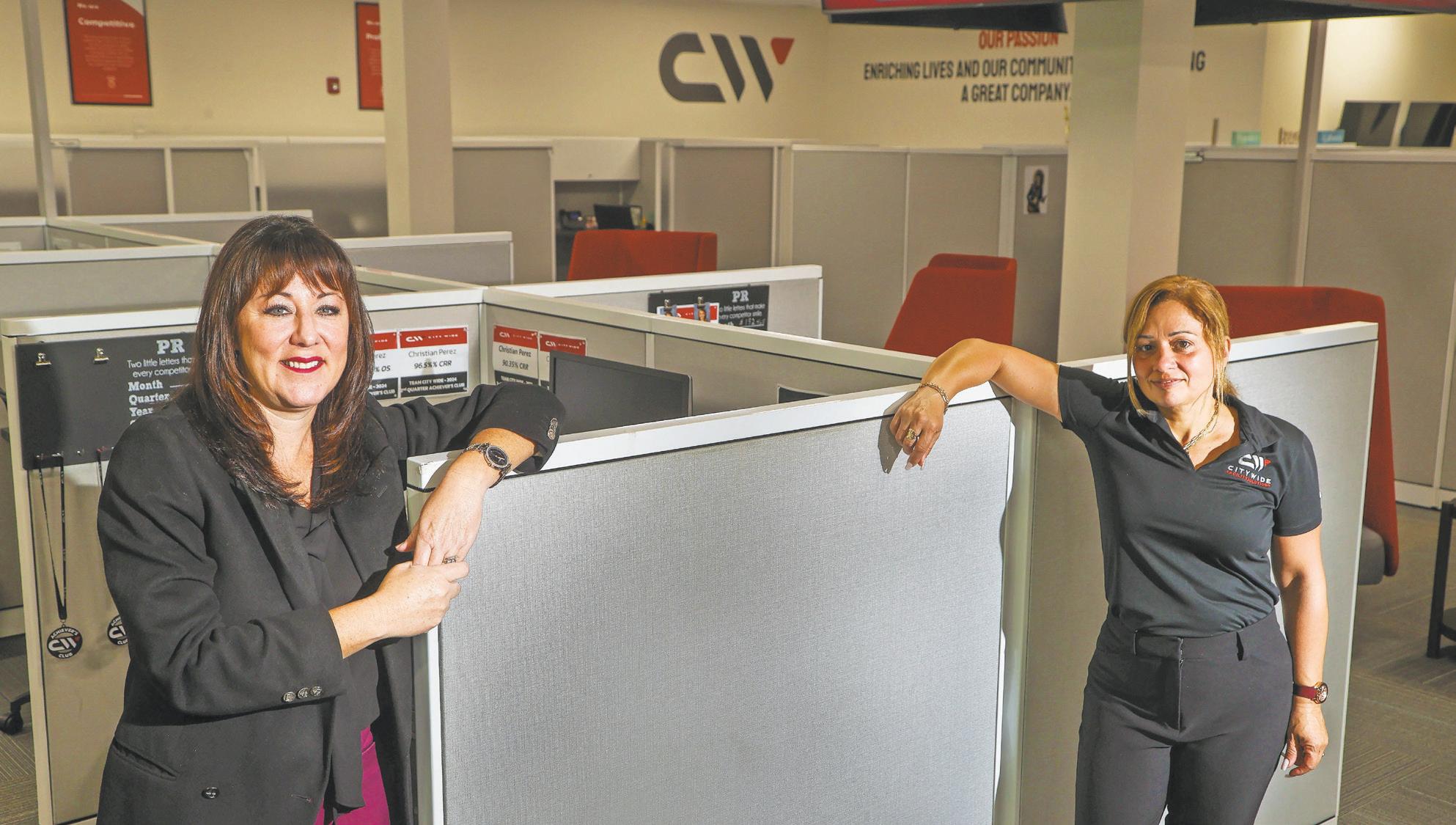
“We celebrate together.”


which is based on anonymous employee surveys conducted by business tech firm Energage.
“I was born in St. Pete and been here my whole life, so I’ve seen this area go through everything,” Sferrazza said.
“It’s been one of my goals ... to help people in our community get built back as quickly as possible, and that’s what we’re doing right now.”
City Wide Facility Solutions manages services for about 700 buildings in the Tampa Bay area, including everything from cleaning university dorms and car dealerships to keeping pools at luxury hotels sparkling. Its employees work with independent contractors to supply the workers who will serve as janitors, who often clean the buildings at night.
Jeremy Chucko, the com-
pany president, said this model allows City Wide to partner with roughly 275 smaller businesses that wouldn’t otherwise have the connections to high-profile clients.
“It gives us the ability to help small, mom-and-pop companies in the area get business they would never get,” he said, like the contract for serving Amalie Arena in Tampa.
Chucko said he and the franchise owners have worked to create a culture that is understanding of employees’ personal lives, an intentional contrast to other places they’d worked in corporate America.
“The last company I worked for ... it was their philosophy if there’s something going on at work, you should miss your kid’s base-
ball game. We’re just not like that,” he said. “It’s very important to us that people get to have their life.”
Grady Bass, a facility solutions manager, said that’s not just a talking point. He left a more demanding job managing a brewery because he wanted to be able to do things like coach his kids’ sports teams in the evenings.
“My daughter’s birthday was two weeks ago. I know I’m OK stopping my route early ... and going to have lunch with her at school,” he said. “They definitely allow me the flexibility to do what’s most important.”
Mileidy Pineiro, an operations manager, said everyone in the company hierarchy is on the same team.
“We have a good relationship with the owner, the president,” she said.
Location: St. Petersburg Employees: 70
Website: gocitywide.com/tampabay
Employee comments:
“I work for a great company that expresses and displays this often. I feel appreciated and rewarded. Also, it allows me the flexibility to have a successful career and be a husband/father.”
“The owners genuinely care for their employees.”
Contact Emily L. Mahoney at emahoney@tampabay.com. Follow @mahoneysthename.



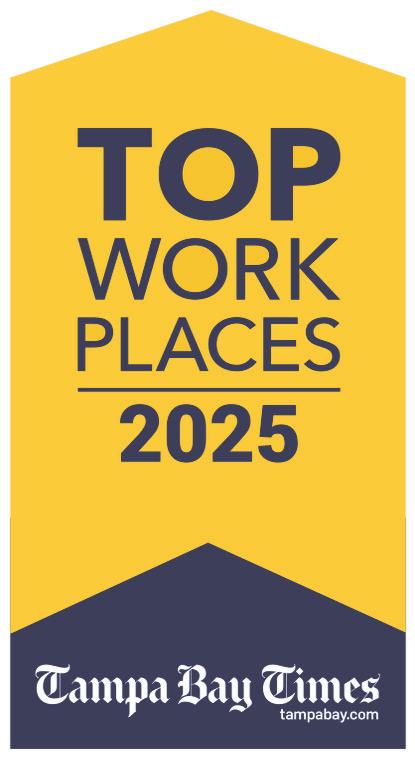


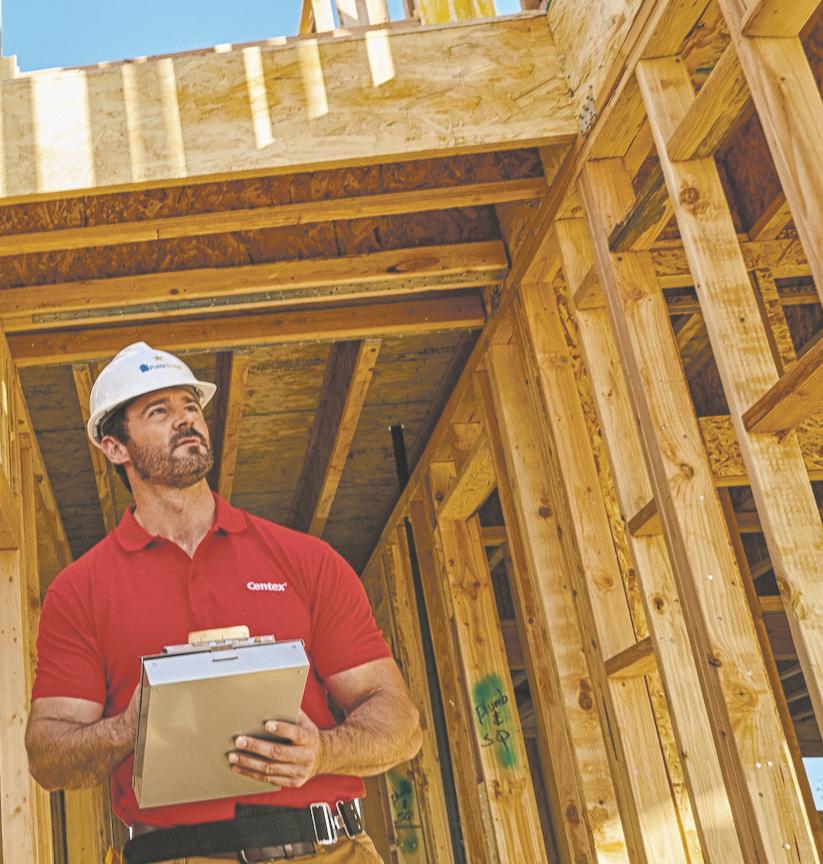















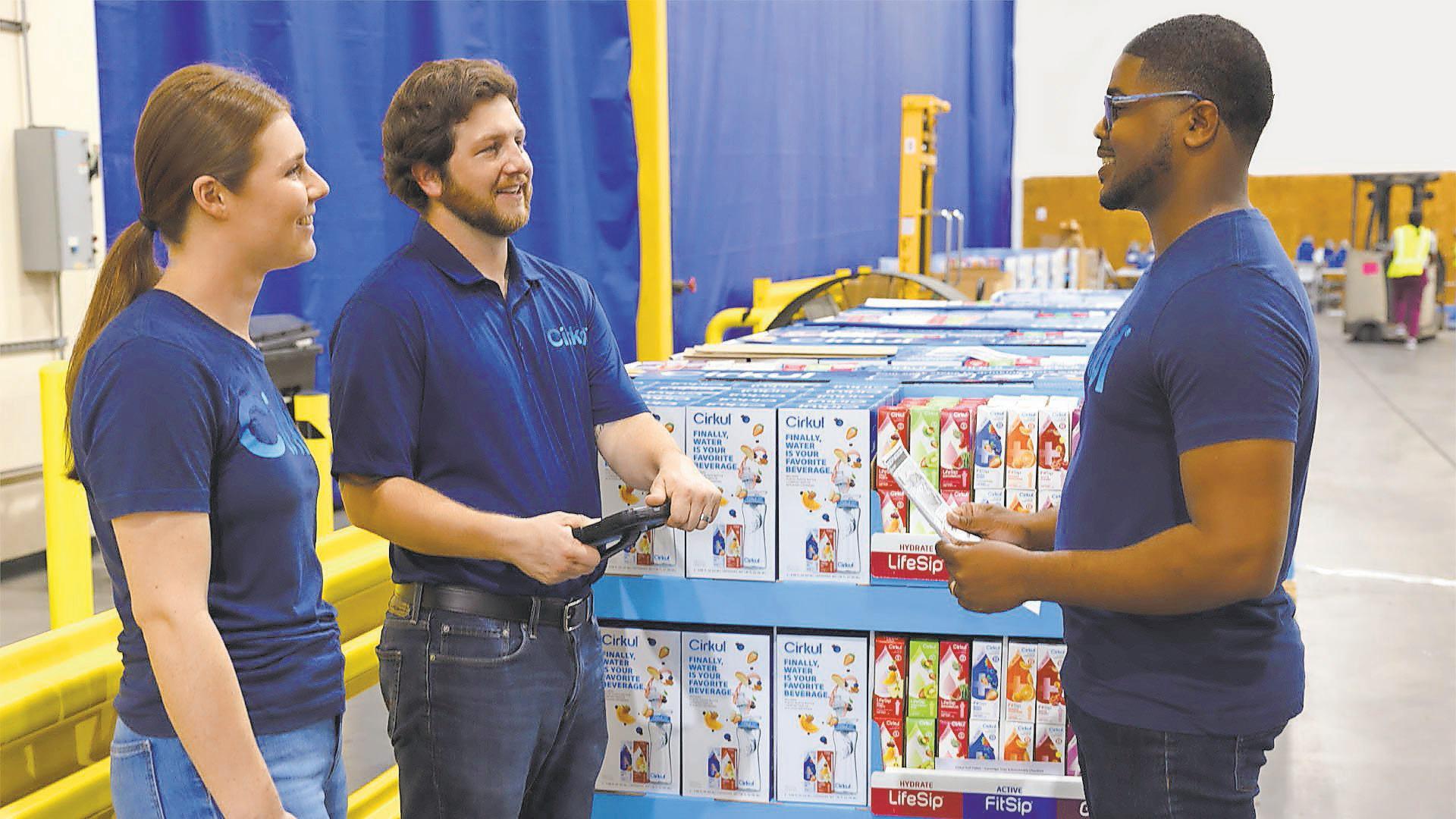
The startup-like atmosphere gives workers a
BY REBECCA LIEBSON Times Staff Writer
When Greg Saint Vil’s 13-year-old daughter found out he landed a job at Cirkul, her eyes lit up in a way that would make any parent proud.
Saint Vil didn’t know a ton about the Tampa-based company when he first applied. But his daughter was very familiar with their product.
She saw it on TikTok.
Videos of people trying Cirkul’s innovative water bottle and its wide assortment of accompanying flavor cartridges have racked up millions of views on the social platform.
“I was like oh man, not only can I be a great dad, but now I can be a cool dad
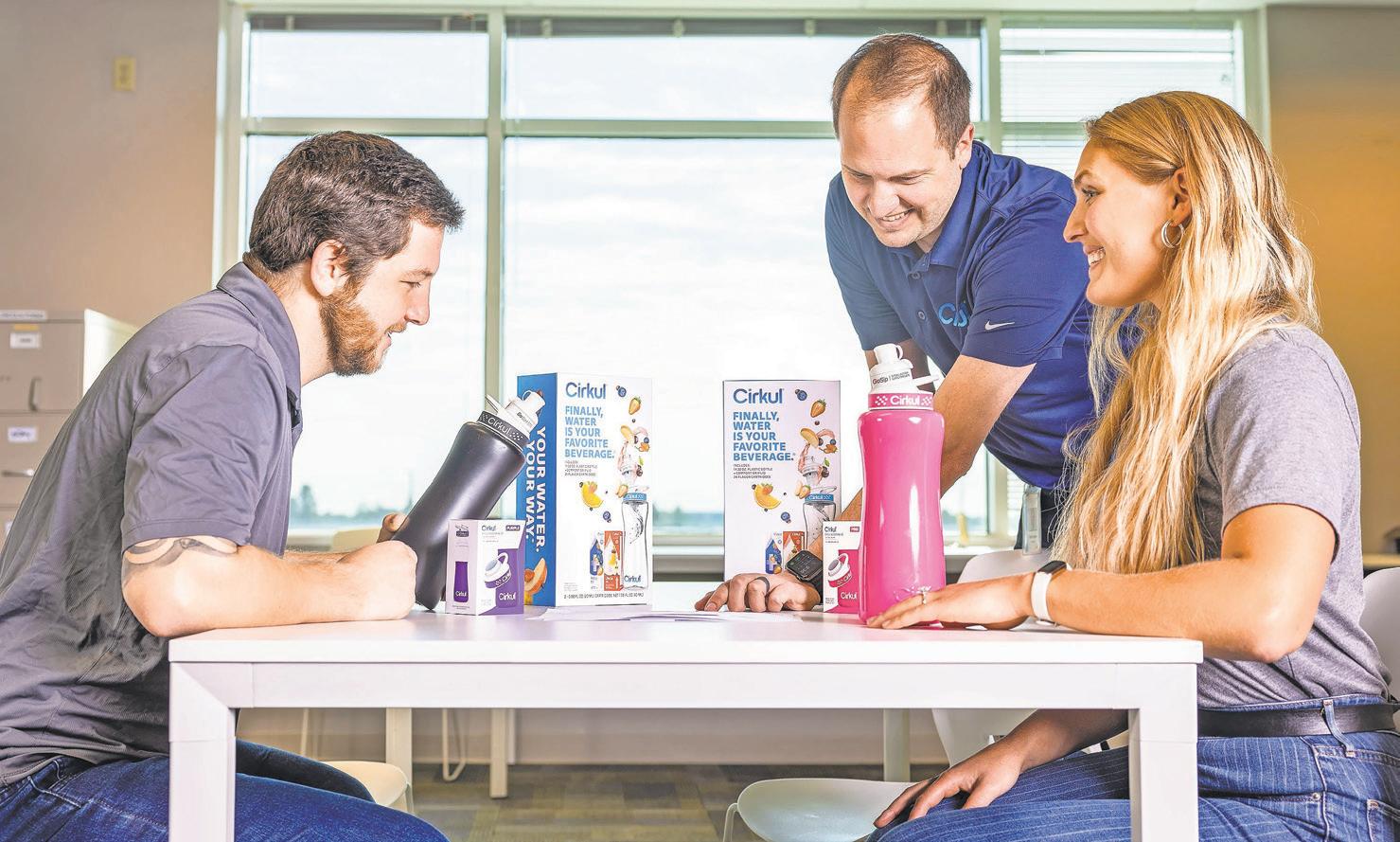
too,” Saint Vil said. He’s been at the company for just over a year and has already switched roles once. He started as a quality assurance manager and now works in continuous improvement. This is pretty standard at
Cirkul, which was founded just seven years ago.
Diego Ramirez, who has been working at Cirkul since its first year in business, said the company has maintained a start-up like atmosphere. That gives people the





A move like that would’ve never been possible at his last company, Coca-Cola.
“When you’re working for a giant corporation like that, they have so many processes in place... it almost handcuffs you,” he said.
Those opportunities don’t come without hard work, said founder and CEO, Garrett Waggoner.
“We’re going up against some of the biggest companies on the planet that have been around for 50, 100 years even,” he said.
But what Cirkul lacks in size and longevity, Waggoner says they make up for in attitude and effort.
“When you’re working with other high performers it’s easy to be a high performer,” said Emily Wood, a director of employee excellence. “You’re intrinsically motivated to grind.”
She’s worked at Cirkul for almost three years and has been promoted twice in that time.
chance to learn about different aspects of the business and take on new responsibilities.
Ramirez was hired in a customer support roll. Now he’s a senior manager for information technology business operations.
As the company continues to expand, Nicole Upshaw, chief human resources officer, said Cirkul is looking for ways to help employees grow with it.
They are preparing to launch a leadership development program that will provide training for over 100 staff members. They’re
also developing a six-month “immersion program” that will give new hires a chance to delve into all the different aspects of the company that they might not get to experience at a traditional orientation.
Waggoner said this will help provide more transparency for workers and help to build trust from the top down.
“It’s being able to just be candid and real with folks.”
• • •
CIRKUL
Location: Tampa Employees: 1,033
Website: drinkcirkul.com
Employee comments:
“I always feel supported in my role by my managers and coworkers. I’ve never felt afraid to ask for help or ask questions. I’ve always felt acknowledged and celebrated for my accomplishments.”
“I am allowed to get out of my comfort zone with challenges and projects.”
“It’s a fun easy place to work hard. We win together and we lose together. It really feels like people want to be here and care about each other.”
Contact Rebecca Liebson at rliebson@tampabay.com.




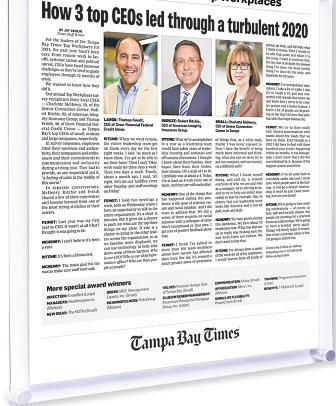












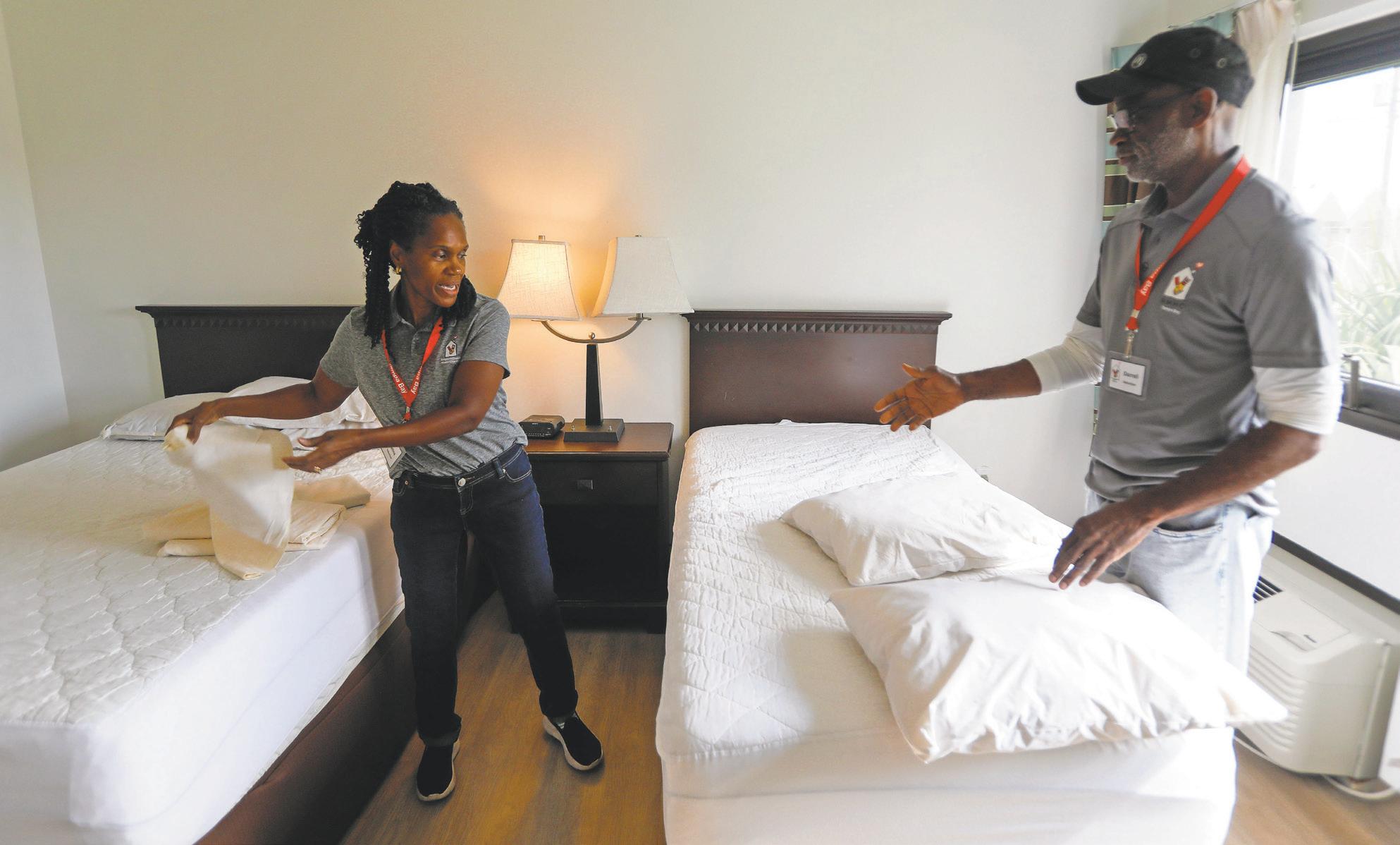
Tampa Bay’s chapter is Florida’s largest in reach and budget. Staff say the mission and culture foster family and growth.
BY TEGHAN SIMONTON Times Staff Writer
Katina and Darrell Winbush were once McDonald’s franchise owners in Chicago, who would migrate to Florida during winter months.
When they retired after more than 20 years, they sold their restaurant locations and moved to Tampa permanently. But they kept volunteering at Ronald McDonald House Charities.
“We just love what they do,” Katina said as she spread a sheet neatly over a bed in a guest room at the Tampa House, located a few steps away from Tampa General Hospital.
of engagement. “I feel like I’m so lucky I found it.” Volunteers and employees alike say that working with Ronald McDonald House is special because of the mission and the culture of the workplace.
“This is the only organization I’ve been a part of where I can honestly say that 100% of staff is truly dedicated to the mission of serving families,” said Tom Barker, major gifts officer. “I think the other part is there is a culture here … that everyone matters. Every opinion matters.”

Staff opinions are included in management decisions, trainings and other opportunities. Each role is approached “like a blank canvas,” allowing flexibility and collaboration. Barker said the impacts to how houses are run for the families served is visible, and it motivates him every time he asks donors for more money.
see their mission expand to new communities throughout the region in ways both planned and unexpected.
When Hurricane Helene flooded the administrative offices in Davis Islands, the chapter opened temporary office space in Ybor.
“It just kind of shows us reaching into another community that didn’t necessarily know about us,” Tramontana said. “Now we’re able to go over there and say ‘let’s do some community outreach in Ybor while we’re here,’ and that’s been wonderful, too.”
And in May, the chapter will open a new house near the St. Joseph’s Children’s Hospital with 11 additional rooms. Tramontana said it will allow the Tampa Bay chapter to serve another 300 to 350 families a year.
Barker said it has been rewarding and inspiring to see community groups, corporate partners and sports teams come together to open the new house. It instills even more faith in the value the charity brings to families.
“I see it, every time I walk into the house, the impact that those dollars make,” he said.
Staff members become fixtures for families undergoing major health challenges.
“It’s just been an amazing thing to watch, how they have come together to help us,” he said. “It’s exciting to see all of that come to fruition.”
“Most of these families are going through something tragic,” he said. It’s important that someone is there, offering “that friendly face.”
The national charity — with 380 chapters across 44 states and 14 countries — is known for its services providing housing and other support to families fighting a child’s illness. With 80 rooms across three houses in St. Petersburg and one in
Katina enjoys stocking and organizing the kitchen, while Darrell likes projects: building shelving racks, fixing things — all the things you’d normally do to take care of a home. On a recent February morning, he sat at the front desk.

Tampa, Ronald McDonald House Charities of Tampa Bay is the largest in Florida in terms of staffing, reach and budget.
“I don’t think I could real-
ly speak to the exponential growth or how wonderful this organization is, or the leadership we’ve had,” said Bryanna Tramontana, the chapter’s associate director
“I love the mission, and what they do here for the families and the community,” said Yadira Lizardi, who has worked as a housekeeper at the Tampa House for 13 years. She maintains the kitchens, the closets and supplies, cleans rooms after a family checks out. But beyond those practical needs, Lizardi has become a comforting presence of the house in the last decade. Sometimes families will return years after their stay, and will ask about her.
“Sometimes they just need somebody to talk to,” she said. “It’s nice to be able to be there for them.” Employees are excited to

Employees: 54 Website:
rmhctampabay.org/
Employee comments:
“I am at peace in service to those in need, and this job allows me to do so. They support me, they are generous in compensation and they see us all as the unique individuals that we are.”
“It provides me the opportunity to help families at a time when it is needed most.”
Contact Teghan Simonton at tsimonton@tampabay.com.






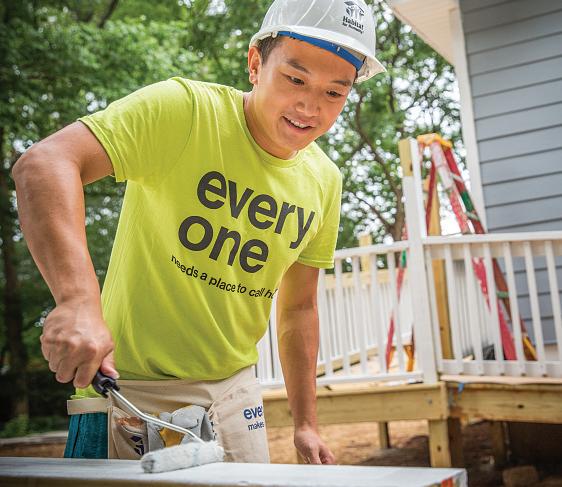









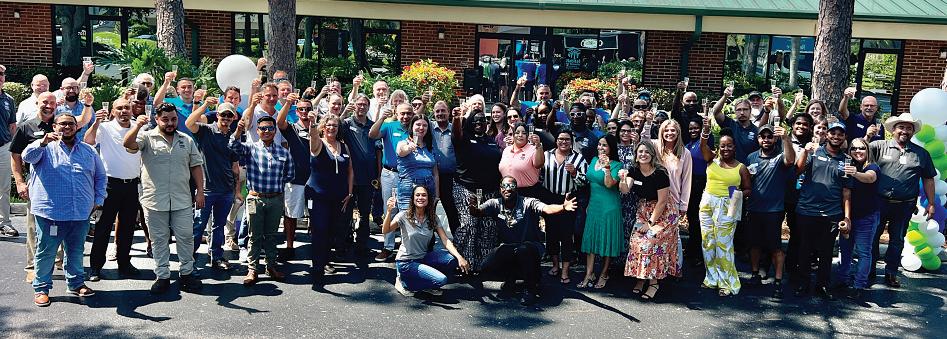




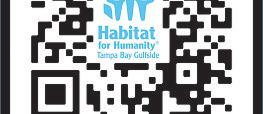




















Employees say the company provides opportunity for advancement.
BY REBECCA LIEBSON Times Staff Writer
Before he started work-
ing for Homes by WestBay, Chris Hill was a customer.
Having worked in sales for other builders, when it came time to shop for his own home, Hill came armed with plenty of questions. The sales associates at Homes by WestBay impressed him with their knowledge, patience and friendly demeanor.
By the end of the process, he ended up landing his dream home and a new job as a sales associate with the company.
Two years on, he feels confident he made the right choice.
“I just fell in love with the product, the culture and the experience,” he said.
Homes by WestBay, which was founded 15 years ago, operates like a sports team, said Willy Nunn, founder and president of the company. When an employee reaches 10 years at the company, they even receive a special customized jersey.
“It’s up to us to perform the best we can,” he said.
“We’ve all got to come to work essentially with our ‘A’ game.”
The foundation for that is good communication and mutual respect.
This is established from Day 1. When an employee is hired they are usually assigned a mentor who can help show them the ropes and answer questions they

may have while they’re getting acclimated. There’s also a meeting once a week in each WestBay community that brings together staff from across departments, including sales and construction. The minutes from those meetings are shared with senior leadership to ensure that everyone is on the same page.
Measures like this help employees feel like their voices are being heard, said Lisa Walton, a field verifi-
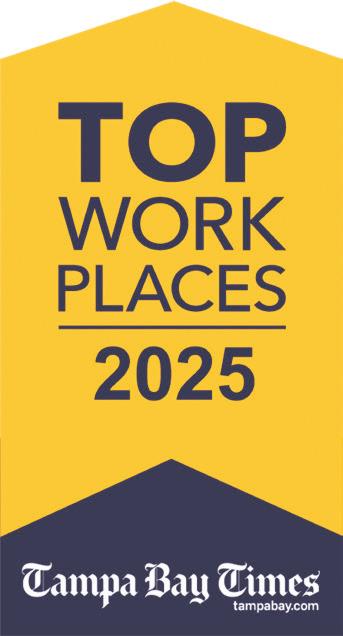
cation and implementation manager.
“I’m the kind of person who sees a need and wants to help fix it,” she said.
That’s how she ended up in her current role. When she was hired three years ago, she was working as a construction project manager. When she approached higher-ups with suggestions for how to improve the “scope of work” — a document outlining all of a subcontractor’s responsibilities on a project — they told her to come up with a plan.
The changes she recommended were implemented company-wide.
Walton realized she had a knack for this kind of work, so she conceptualized a new role for herself and successfully pitched it to senior leaders.
“I love that I get to do a job where I’m challenged,” she said. “I feel like there’s potential for me to grow.”
Nunn said this is one of the benefits of working for a smaller, privately owned company, something that is
becoming increasingly rare in the real estate space.
“We’re always about providing opportunities for our people first,” he said.
Location: Tampa Employees: 258
Website: homesbywestbay.com
Employee comments:
“I always feel supported in

my role by my managers and coworkers. I’ve never felt afraid to ask for help or ask questions. I’ve always felt acknowledged and celebrated for my accomplishments.”
“I am allowed to get out of my comfort zone with challenges and projects.”
“It’s a fun easy place to work hard. We win together and we lose together. It really feels like people want to be here and care about each other.”
Contact Rebecca Liebson at rliebson@tampabay.com.









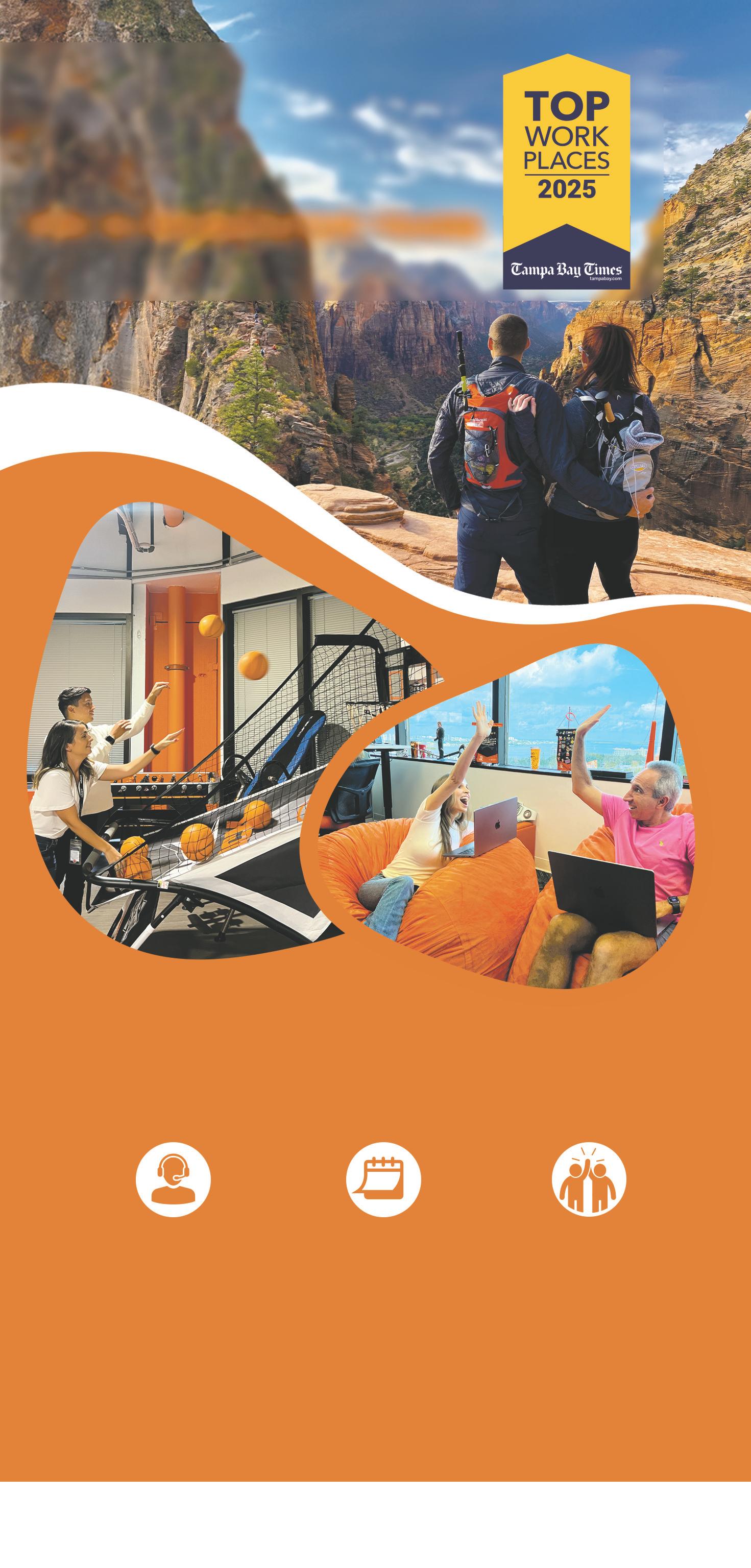
Most discussions about innovation stiflers focus on rigid hierarchies, tight deadlines and risk-averse cultures.
BY TONY MARTIGNETTI Fast Company (TNS)
Organizations talk about wanting innovation, but most aren’t willing to create the right conditions for it. We celebrate disruptors, bold thinkers and game-changing ideas — but the way most organizations actually run makes creativity nearly impossible.
Leaders ask, “How do we encourage creativity?” But the real question is: “How do we keep it alive in a world that values efficiency over exploration?”
Efficiency kills creativity, but not how you think
Most discussions around creativity killers focus on rigid hierarchies, tight deadlines and risk-averse cultures. While these are barriers, the deeper, more insidious problem is the cult of efficiency. Organizations optimize for productivity, predictability and speed — often at the expense of curiosity and imagination.
Creativity, by its very nature, is inefficient. It requires space for ambiguity, exploration and even failure. Yet, in many workplaces, the pressure to deliver immediate results leaves no room for the wandering that leads to breakthrough ideas.
I have seen this firsthand in my work as a leadership adviser. In my early career in finance and strategy, I was conditioned to optimize every process for efficiency. However, I also saw that some of the most groundbreaking solutions came not from speed but from leaders and teams who embraced deep exploration. When I transitioned
to coaching executives, I noticed a pattern: Those who created intentional space for creative thinking — whether through unstructured brainstorming, cross-disciplinary conversations or reflection —were the ones who consistently led innovation. Yet, too often, creativity was treated as an afterthought that happened only in scheduled “innovation sessions” rather than an ongoing practice.
Toyota revolutionized manufacturing with lean principles, but their greatest innovation — the hybrid car — wasn’t the result of efficiency. It was born from experimentation and longterm thinking. Similarly, Steve Jobs’ most groundbreaking ideas didn’t emerge from staring at spreadsheets but from deep, unstructured contemplation — something many leaders today would dismiss as unproductive. The paradox is clear: Efficiency is necessary for execution, but it is the enemy of exploration. When efficiency becomes the dominant priority, creativity suffocates.
Creativity thrives under purposeful inefficiency
To sustain creativity, leaders must resist the impulse to manage it like a process and instead design for it like an ecosystem. Creativity flourishes in environments where friction exists — not in the form of bureaucratic red tape but in the form of intellectual collisions, differing perspectives and permission to explore the unknown. This is what I call deliberate inefficiency — an approach where slowing down actually accelerates long-
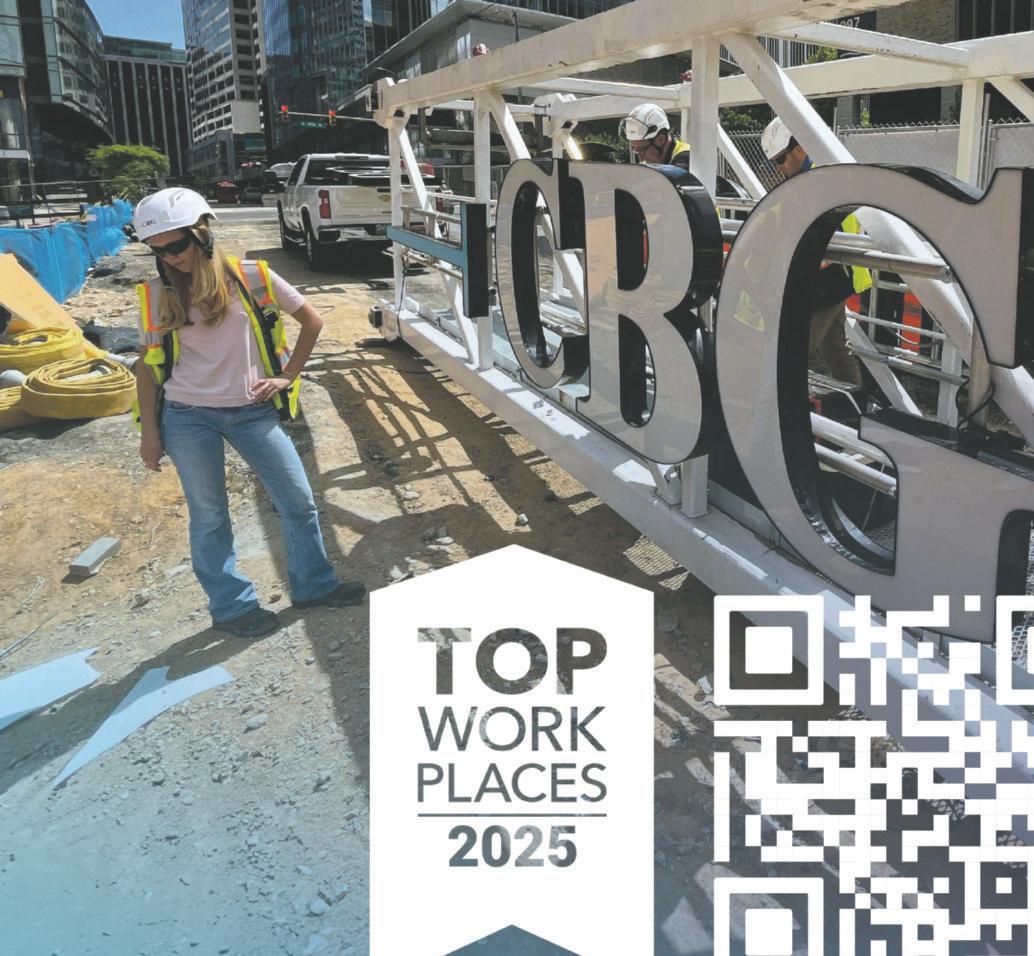

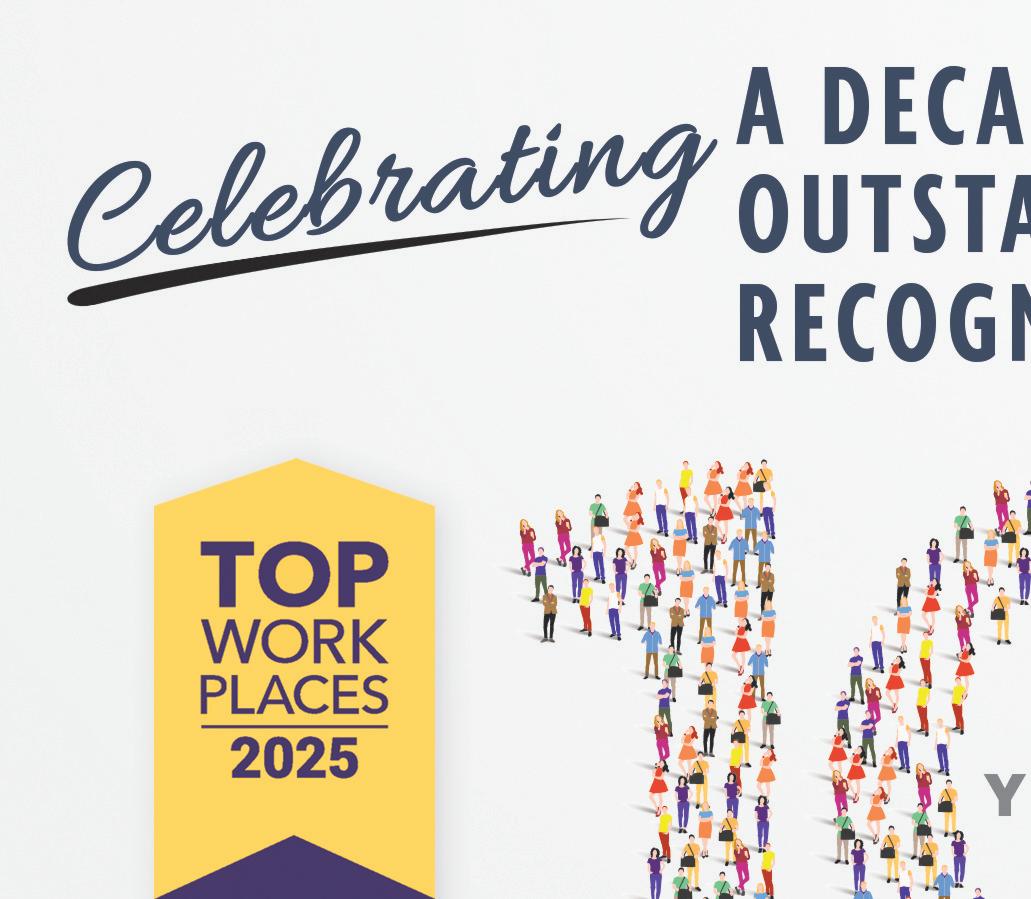

term innovation. Organizations that optimize solely for speed often end up producing predictable, incremental solutions rather than true breakthroughs.
Throughout my career, I have worked with executives who struggled to break out of the cycle of busyness. One executive I coached, a brilliant strategist at a global biotech company, was feeling stagnant. His days were packed with back-to-back meetings, leaving no time for the deep thinking required for innovation. We worked together to redesign his schedule, blocking time for curiosity-driven exploration and structured white space for creative thinking. Within months, his team started generating novel ideas that reshaped their approach to research and development. What changed wasn’t their ability to be creative — it was their permission to be creative.
The leaders who truly champion creativity do not see themselves as managers of ideas but as orchestrators of creative conditions. They assume three essential roles: the Curator, the Gardener and the Alchemist.
The Curator gathers diverse perspectives and fosters creative collisions, much like Pixar’s Braintrust, where raw, unpolished ideas are challenged in an environment of candid yet constructive feedback. The Gar-


dener protects ideas when they are still fragile, allowing them to take root before they are subjected to scrutiny. Great ideas are often killed too early simply because they don’t look fully formed. The Alchemist combines seemingly unrelated elements to create unexpected breakthroughs — think of how Apple blended technology and design to reinvent entire industries. When leaders embrace these roles, they shift from controlling output to facilitating creative breakthroughs.
Creativity can’t be sustained through one-off initiatives like brainstorming sessions or innovation sprints. The most creative organizations embed creativity into their structural DNA. They don’t wait for inspiration to strike; they engineer the conditions where it can thrive consistently.
I have helped organizations shift from ad-hoc creative efforts to more structured creativity ecosystems. One company I worked with struggled with stagnation because they relied too much on periodic brainstorming sessions. We introduced mechanisms that embedded creativity into their daily workflows — things like interdisciplinary collabora-
tion spaces, regular storytelling forums where employees could share unconventional ideas and scheduled “curiosity breaks” where teams could step away from execution to reflect and explore. The impact was profound: Teams started developing ideas that had been dormant for years, and the organization saw a measurable increase in both engagement and breakthrough thinking.
The best creative cultures recognize that innovation isn’t about having more ideas; it’s about creating the right conditions for meaningful ideas to emerge. This requires shifting from a culture of efficiency-driven execution to one that prioritizes exploration. It means rewarding curiosity, not just execution — encouraging questions, not just answers. It means fostering a culture where failure is viewed as a necessary part of the learning process, not a career-ending mistake. And it requires carving out white space for deep work and reflection, because creativity does not happen in relentless busyness — it happens in the pauses between intense periods of focus.
The leaders who will thrive in the future won’t just be efficiency experts — they’ll be the ones who know how to protect and nurture creativity. They will recognize that innovation isn’t about simply having more ideas but about fostering the right conditions for meaningful ideas to emerge. This means prioritizing exploration as much as execution, rewarding curiosity as much as results, and carving out space for deep thinking amid the daily grind. The most innovative organizations won’t wait for creativity to strike; they’ll build the ecosystems that allow it to flourish.






